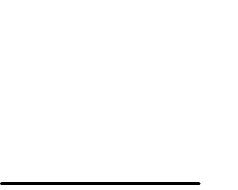| « previous section | next section » |
In this section we shall introduce two relations that allow to compare sets: equality and inclusion.
Definition 1.2.1 Sets' equality
We shall say that two sets X and Y are equal if and only if for every x, if x ∈ X, then x ∈ Y, and if x ∈ Y, then x ∈ X. in symbolic notation:
X = Y iff (x ∈ X ⇒ x ∈Y) and (x ∈Y ⇒ x ∈X).
According to the definition, two sets are equal if they have exactly the same elements. In particular, it means that changing the order of elements or adding twice the same element does not change the set. Thus, we have:
{1, 2, 3, 4, 5} = {x ∈ N : 0 < x < 6 } = { 1,1,2,2,3,3,4,4,5,5} = {5, 4, 3, 2, 1}
{x ∈N : x2 <0 } = {x ∈ R : x = x+1} = {x: x is a zero of the equation x2 + 2x + 2 = 0}.
Remark. It follows, that writing the set in the form {x1,...,xn} we shall assume, that for i ≠ j, xi is different from xj. The number of elements in a set X will be called the cardinality of the set and will be denoted by |X|. So, |{x1,...,xn}|= n.
As a simple consequence of the definition 1.2.1 we have:
Lemma 1.2.1
For arbitrary sets X, Y, Z, if X = Y and Y = Z, then X = Z.
It is worthwhile to consider for a moment the negation of equality. What does it mean, that two sets X and Y are not equal, X ≠Y? According to the definition, there is an element of the set X, that does not belong to the set Y, or there is an element of Y that is not an element of X. For example, R ≠ N, since √2 ∈ R and √2 ∉ N. On the other hand, each natural number is a real number, i.e. is a member of the set R.
Definition 1.2.2 Inclusion
A set X is included in a set Y, or Y includes a set X, in symbolic notation X ⊆ Y iff every element of the set X is an element of the set Y.
If X ⊆ Y, then in particular X can be identical with Y (can be equal to Y). We write X ⊂ Y to mark that such a situation does not take place. The relation ⊆ is called inclusion, whereas the symbol ⊂ is called proper inclusion. The set X such that X ⊆ Y (X ⊂ Y) is called a subset of the set Y or, when they are not equal, X is called a proper subset of Y. Observe that the empty set is a subset of any arbitrary set.
To represent sets graphically we shall use the so called Venn's diagrams. A Venn diagram (introduced by John Venn) is a drawing, in which a circular area groups objects sharing a common property. To draw a diagram we start with a rectangle representing the universal set (universe) - the subsets of which we would like to discuss. Then each set (each subset of this universe) is represented by a circle. Each element that belongs to more than one set will be placed in the part where the circles overlap. The inclusion X ⊆ Y means that X is a part of Y, which is illustrated by placing a circle X inside the circle Y, as it is presented on Figure 1.2.1.

Figure 1.2.1 Inclusion, X ⊆ Y.
Example 1.2.1
1. The set of women-students is a subset of the set of all students of PJIIT. Whereas the set of all students of PJIIT is a proper subset of the set of all students in the world.
2. Intervals are examples of subsets of the set of all real numbers that are worthy of notice. A closed interval [a, b], where a ≤ b is a set of real numbers that are less or equal than b and not smaller than a. in symbolic notation [a, b] = {x ∈ R : a ≤ x ≤ b}. Open interval (a,b) is a set of all real numbers that are exactly between a and b. In symbolic notation (a, b) = {x ∈ R : a < x < b}. We will sometimes talk about open-closed interval when one of the ends is in the interval and the other is not: (a, b] or [a, b).
Let us remark, that when A is not included in B, the three possible situations may appear, see Figure 1.2.2:
A and B have no common elements, in that case we say that A and B are disjoint,
A is a superset of B, that is all elements of B belong to the set A,
A has at least one element that does not belong to B and B has at least one element that does not belong to A.

Figure 1.2.2 The set A is not included in the set B.
Let us notice, that A is not included in B if and only if, there is an element a, a ∈ Α, a ∉ α.
Example 1.2.2
The set of natural numbers divisible by 2 is not a subset of the set of all natural numbers divisible by 5, since for example 4 is divisible by two and not by 5. The opposite is also not valid: the set of all natural numbers divisible by 5 is not a subset of the set of all natural numbers divisible by 2, since for example 15 is divisible by 5 and not by two. (see Figure 1.2.3).

Figure 1.2.3
Remark. For every x, if x ∈ A, then {x} ⊆ A, and x ∈ {x} but x ≠ {x}. Do not mix up the element x with the one-element set {x}.
Question 1.2.1
The following simple facts connected with inclusion are the immediate consequences of the definition 1.2.1.
Theorem 1.2.1
For arbitrary sets A, B, C the following properties hold:
∅ ⊆ A,
A ⊆ A,
If A ⊆ B and B ⊆ C, then A ⊆ C.
The first property expresses that the empty set is a subset of
an arbitrary set. According to the definition, we should prove that
every
element that belongs to ∅ is in the set A.
But the empty set has no elements. Thus ∅ ⊆ A.
The second property is obvious by the definition.
The third property is known as transitivity of inclusion. To show its
validity let us assume that A ⊆ B and B ⊆ C. If an element a is in the set A then (by the
first assumption) a ∈ B, and then (by the
second assumption) a ∈ C. Thus, when
a ∈ A then a ∈
C. ♦
Question 1.2.2 Write shortly: "A is not included in B or B is not included in A".
Definition 1.2.3 (Power set)
The power set of A, in symbolic notation P(A) , is a set composed of all subsets of the set A. We shall denote it also by 2A.
Example 1.2.3
(a) Let A = {0, 1}. The power set of A, P(A), consists of four sets ∅, {0}, {1}, {0,1}. Thus P(A) = { ∅, {0},{1}, {0,1}}. please notice, that 0 is an element of A and {0} is a subset of A.
(b) If B = {1,{2},{1,2}}, then its elements are the number 1, the one-element set {2} and the two element set {1,2}, while the subsets of B are: the empty set, three one-element sets {1}, {{2}}, {{1,2}}, three two-element sets {1,{2}}, {1,{1,2}}, {{2}, {1,2}} and one three-elements set {1, {2}, {1,2}}, identical to B. Thus P(B) has 8 elements.
Remark. P(A) is never empty. Even if A is the empty set, the power set P(A) contains one set: the empty set ∅. Hence P( ∅ ) ≠ ∅ and P( ∅ ) = { ∅ }.
Question 1.2.3 How many elements are in P(X), when X is a four-element set?
| « previous section | next section » |